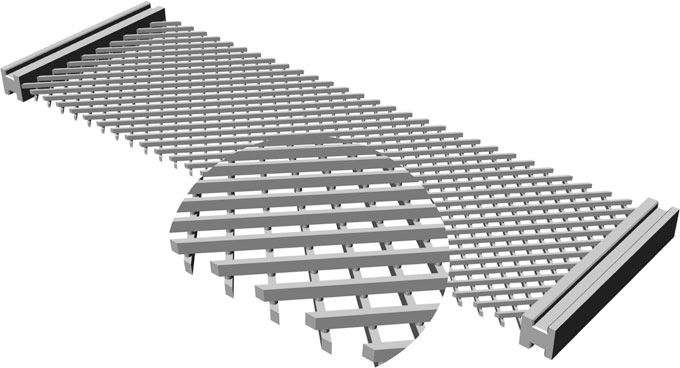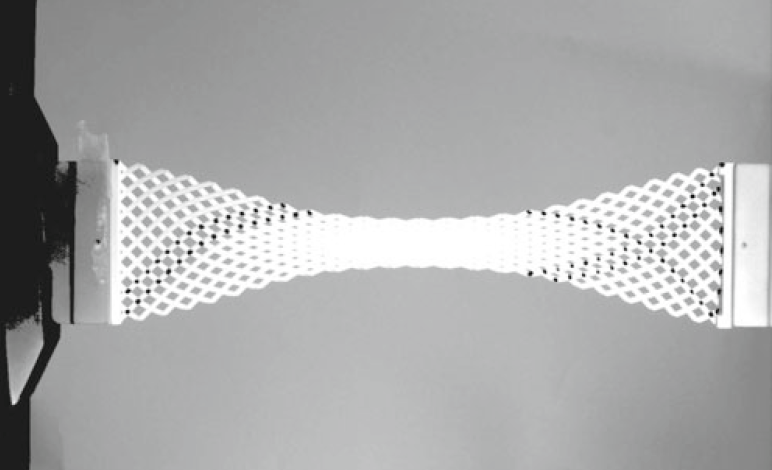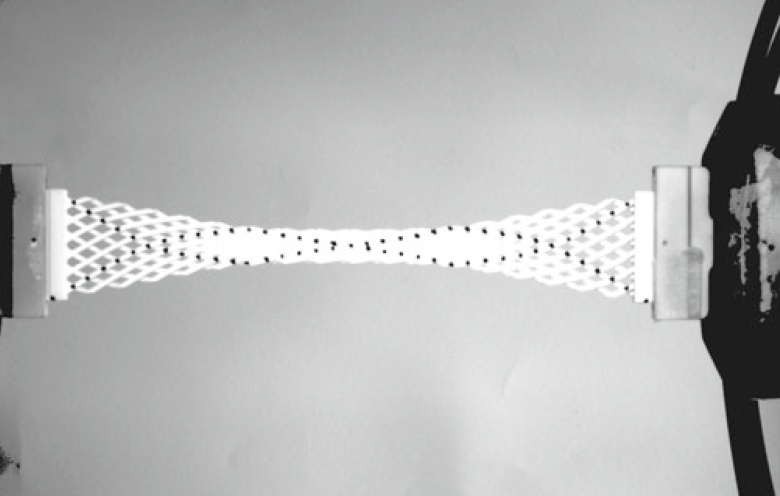Researchers in Italy and Poland demonstrate a mathematical approach to predicting the structure of 3D printed elastic structures. By practically realizing elastic theory, the study opens up the potential of 3D printed metamaterials that act “against their nature”, i.e. a solid plastic that resists compression from one direction, but can be stretched in another.
The unusual properties of these materials are useful in areas of civil and biomechanical engineering as they enable new ways to design and reimagine objects. Examples of “exotic” materials given in this study are woven fabrics, and those with an ability to mimic bone tissue, as in previously reported research at Northewestern University.
The metamaterial behaviour of a 3D printed lock, developed by the German Hasso Plattner Institut
A closer look at the elasticity of lattices
The specific focus of this European study is on an ability to mathematically predict pantographic structures. As in the moving image above, pantographic structures are composed of interlinking parallelograms to make a lattice.

The structure was originally devised as a mathematical example of metamaterial behaviour, impossible to create with traditional manufacturing. In the study, authors investigate how a particular measure of elastic strain, known as the “Hencky-type model”, can now be realised using 3D printing.
Putting theory into practice
To measure how the materials perform in comparison to numerical predictions, the researchers 3D print two pantographic structures: one orthogonal (including right-angles) and one non-orthogonal (with more obtusely angled parallelograms).
These materials then undergo a tensile test to measure mechanical deformation.


Research finds that the numerical simulations of these structures are able to predict the same stresses as the physical lattices. The conclusions therefore reveal that,
It deserves to be investigated how to improve the design of 3D printed fabrics in order to fully exploit the exotic behaviour of higher gradient metamaterials. We remark that the behaviour of higher gradient continua shows many peculiarities which deserve a deeper experimental investigation.
Closing the gap between math and technology
As explained in the abstract of the study, “Current research in metamaterials design is pushing to fill the gap between mathematical modeling and technological applications.” Other examples of closing this gap with 3D printing can be seen in MIT’s research into 3D printed graphene, the optical theory behind instilling color into 3D printed objects, and algorithms to mimic the natural strength of oyster shells.
A full version of Can a Hencky-Type Model Predict the Mechanical Behaviour of Pantographic Lattices? is published online in Advanced Structured Materials journal Volume 69. It is co-authored by Emilio Turco from Italy’s Department of Architecture, Design and Urban Planning; Maciej Golaszewski of the Warsaw University of Technology; Ivan Giorgio from Università dell’Aquila; and Luca Placidi from the International Telematic University Uninettuno.
To stay up to date with 3D printed metamaterial research, sign up to the 3D Printing Industry newsletter, follow us on Twitter and like us on Facebook.
Vote for the best 3D printing research projects in the first annual 3D Printing Industry awards.
Featured images shows a demonstration of elastic metamaterial properties in Carbon’s 3D printed elastomeric polyurethane. Photo via Carbon on YouTube



